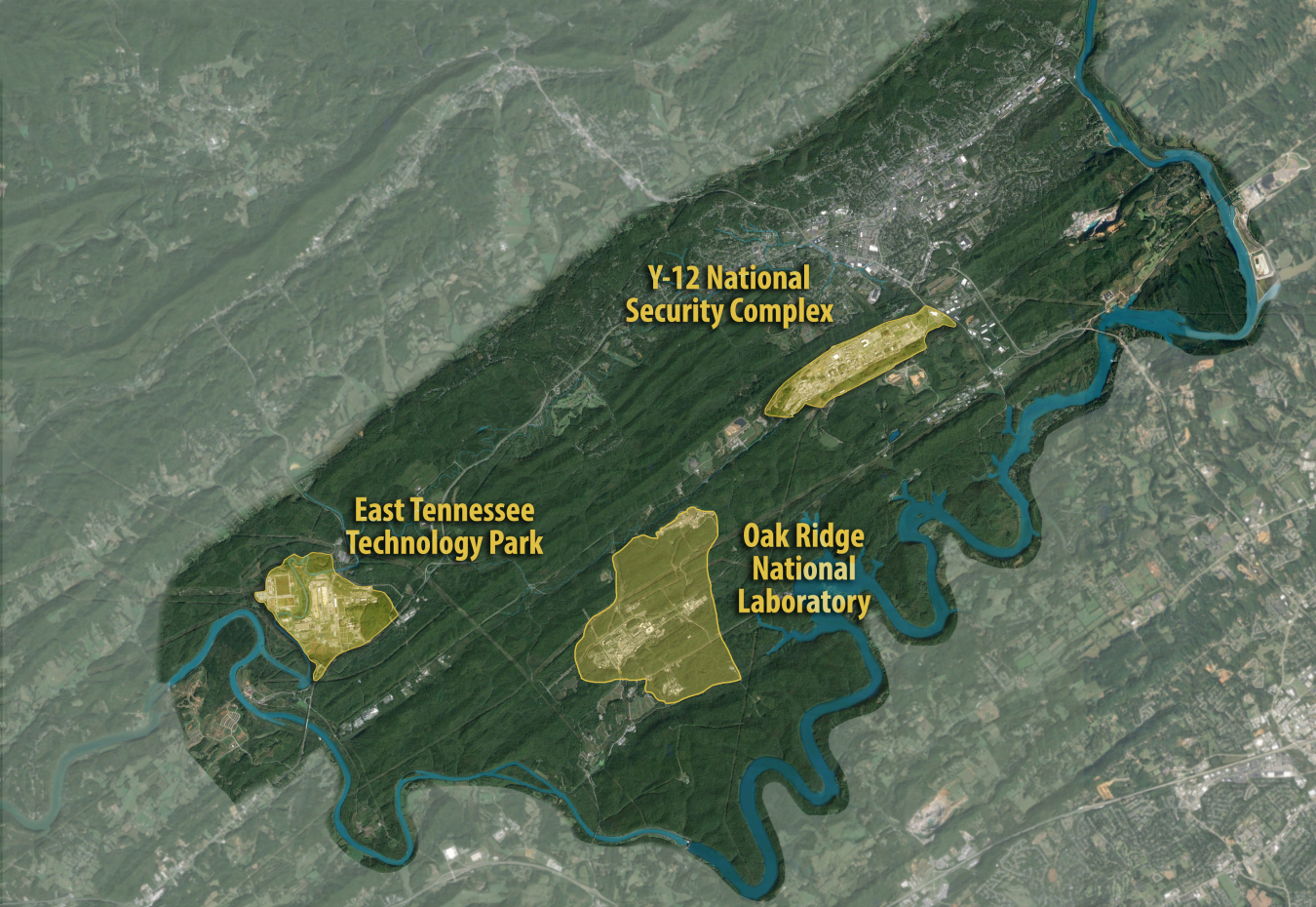
The 30,000-acre Oak Ridge Reservation contains three primary cleanup areas-- the Y-12 National Security Complex, Oak Ridge National Laboratory, and East Tennessee Technology Park12 National Security Complex.
DOE’s Oak Ridge Reservation contains three primary sites where OREM is performing cleanup— the Y-12 National Security Complex (Y-12), Oak Ridge National Laboratory (ORNL), and East Tennessee Technology Park (ETTP).
Oak Ridge is a unique EM site because cleanup is happening at active sites with ongoing missions. Y-12 is a National Nuclear Security Administration-owned site performing national security missions, while ORNL is an Office of Science-owned site advancing research missions. ETTP was an EM-owned site, but land there is being steadily transferred to the community as it’s cleaned.
With cleanup nearing completion at ETTP, OREM is focusing its efforts at Y-12 and ORNL. Crews had space and flexibility with cleanup projects at ETTP due to its open footprint and absence of enduring DOE missions; however, crews must maneuver in smaller, confined footprints at Y-12 and ORNL as they conduct cleanup activities in close proximity to ongoing research and national security missions.
It is also important to note that workers are addressing different hazards at each site—mercury at Y-12, radiological contamination at ORNL, and previously uranium at ETTP.
Our priority at Y-12 is the demolition of excess buildings and remediation of underlying soils and groundwater that are contaminated with mercury. Mercury continues to migrate into the Upper East Fork Poplar Creek, which enters public water at the site boundary. We are funding research and executing projects that will reduce mercury migration into waterways and address its sources.
Our priority at ORNL is the disposition of U-233 material and legacy transuranic waste, the demolition of excess facilities, and remediation of underlying soils and groundwater that have nuclear and radiological contamination from years of isotope production and reactor research.
OREM uses the following criteria to prioritize its work within the constraints of annual appropriations across three sites that have different hazards and operating conditions:
- Eliminate any offsite releases
- Prevent contamination from traveling offsite
- Address sources of onsite contamination
- Demolish aged, contaminated facilities
- Address soil, groundwater, and surface water

